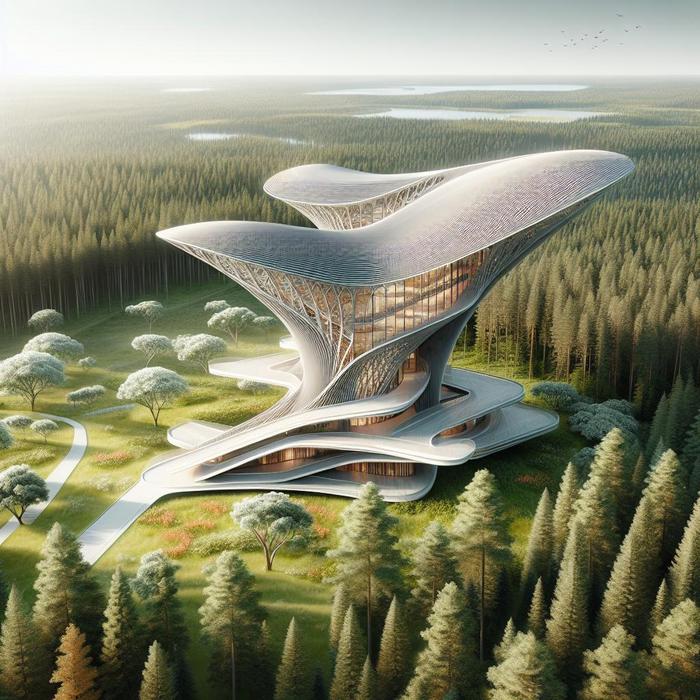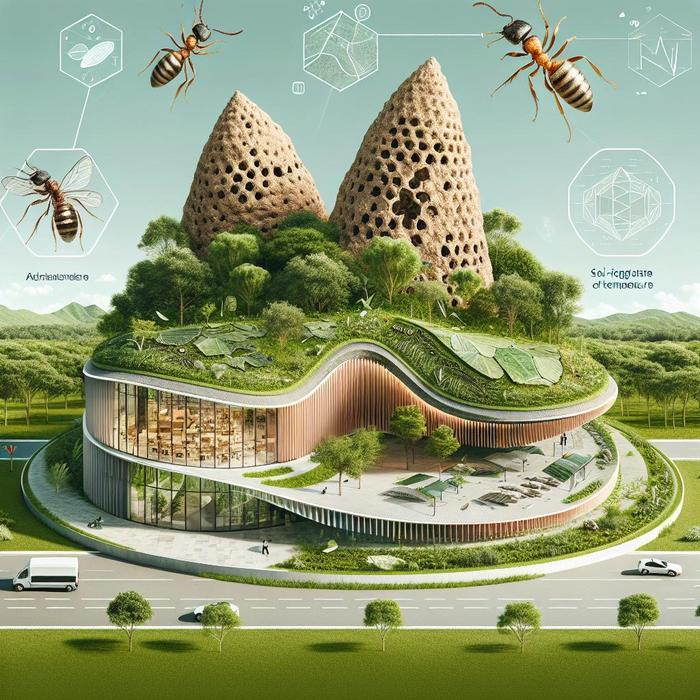Right from Nature’s Blueprint: The Biomimetic Era of Architecture
Have you ever contemplated how the organic beauty of the natural world could revolutionize man-made creations? The answer has been right under our noses for centuries and has recently catapulted to the forefront of architectural innovation. Welcome to the world of biomimetic design, where architects are using nature as their inspiration and guide.
Entering the Biomimetic Era: Building Challenges Meet Nature’s Lessons
What if the challenges facing modern architecture could be tackled by looking to natural solutions? It seems the Earth has already provided engineers with a blueprint to efficient, sustainable structures through an approach known as biomimicry or biomimeting. This design philosophy doesn’t just imitate nature’s appearance; it emulates its functionality and processes too. For instance, the organic structure of a honeycomb provides a model for robust, yet lightweight, construction materials.
Changing the Paradigm: Architecture Inspired by Nature’s Efficiency
Could adopting nature-inspired design principles enhance modern buildings’ energy efficiency? Research suggests it indeed can. Natural structures like termite mounds and cactus spines have informed the design of buildings with optimal cooling and heating systems. The result: a significant decrease in energy expenditure, nudging us closer to a more sustainable world.
Casting a New Light: Biomimetic Design in Urban Spaces
Imagine, if you will, cities modeled after forests. We have already seen this concept in play, where the principles of biomimicry have informed the layout of urban spaces, emulating nature’s ecosystems to balance resources and promote harmony. Like a forest, an efficiently designed city would generate resources, recycle waste, and offer habitat spaces, transforming urban landscapes into flourishing ecosystems.
Making Waves in Water Management: Learning from Nature
How often do we turn on the tap without considering the intricate process behind water sanitation? Here again is an area ripe for the influence of biomimicry. By observing how water bodies in nature filter impurities, engineers can design more effective water purification systems. Such biomimetic technologies not only promote sustainability but also improve public health.
Championing a Sustainable Future with Biomimetic Design
Are we unlocking the full potential of biomimicry in creating a sustainable future? Evidently, there’s scope for more. The possibilities are exciting and endless, and perhaps that’s why biomimicry is fast becoming the cornerstone of modern architecture. Current practices show that sustainability is no longer an added feature but the very foundation of design. By recognizing and harnessing nature’s wisdom, we can pave the way for architectures that are not just efficient and sustainable but also harmonious with the world surrounding them.
While we have made significant strides in learning from nature, there’s more to explore, emulate, and innovate. With biomimicry steering the narrative, the future of architecture promises to be greener, more sustainable, and deeply rooted in nature’s wisdom.
This is a repost for the instructions above since there are duplicates (The post was copied twice).
Right from Nature’s Blueprint: The Biomimetic Era of Architecture
Have you ever reflected on how nature’s innate splendor could revolutionize human creations? This potent solution has been right under our nose for a millennia, only recently coming into the limelight in the field of architectural innovation. Welcome to the fascinating universe of biomimetic design, where architects are employing nature as their muse and mentor.
Embarking on the biomimetic journey: Dealing with Building Challenges with Nature’s Wisdom
What if the issues plaguing modern architecture could be solved by taking cues from Mother Nature? Our earth has already gifted engineers with a blueprint for effective, sustainable structures courtesy of a technique called biomimicry or biomimeting. This design ideology doesn’t just mimic nature’s aesthetics; it emulates its functionality and mechanisms as well. To illustrate, the organic structure of a honeycomb serves as an inspiration for sturdy, yet lightweight, construction materials.
Altering the status quo: Architecture Drawing Inspiration from the Efficiencies of Nature
Can integrating nature-inspired design principles improve the energy efficiency of contemporary buildings? Current research strongly supports this hypothesis. Natural structures like termite burrows and cacti have been instrumental in designing buildings with optimum cooling and heating mechanisms. The result is a substantial reduction in energy consumption, nudging us closer to a more sustainable world.
Branching Out: Biomimetic Design in Urban Landscapes
Visualize a cityscape modeled after a forest, if you will. This concept is already being adopted, where the fundamentals of biomimicry guide urban planning, emulating nature’s ecosystems to ensure resource equilibrium and promote harmony. Similar to a forest, an efficiently designed city generates resources, recycles waste, and provides habitat spaces, effectively converting concrete jungles into flourishing urban ecosystems.
Creating Ripples in Water Management: Gaining Insight from Nature
How often do we open the faucet without pondering the intricate processes behind water cleaning? Biomimicry once again offers a much-needed solution to improve this sector. Studying how natural water bodies filter impurities, engineers can construct better water sanitation systems. Such biomimetic technologies not only propagate sustainability but are also critical in enhancing public health.
Leading the Charge toward a Sustainable Future with Biomimetic Design
Are we leveraging the full potential of biomimicry in forging a green future? Apparently, there’s room for growth and more. The possibilities are thrilling and limitless, which could explain why biomimicry is becoming a cornerstone of modern architecture. Prevalent practices demonstrate that sustainability is no longer a fringe feature but the very bedrock of design. Embracing and harnessing nature’s wisdom paves the path for architectural marvels that are not just efficient and sustainable but also harmonious with their surroundings.
As we continue to make significant strides in learning from nature, there is an ocean yet to discover, replicate, and innovate. With biomimicry directing the narrative, the future of architecture promises to be greener, more sustainable, and profoundly influenced by nature’s wisdom.


